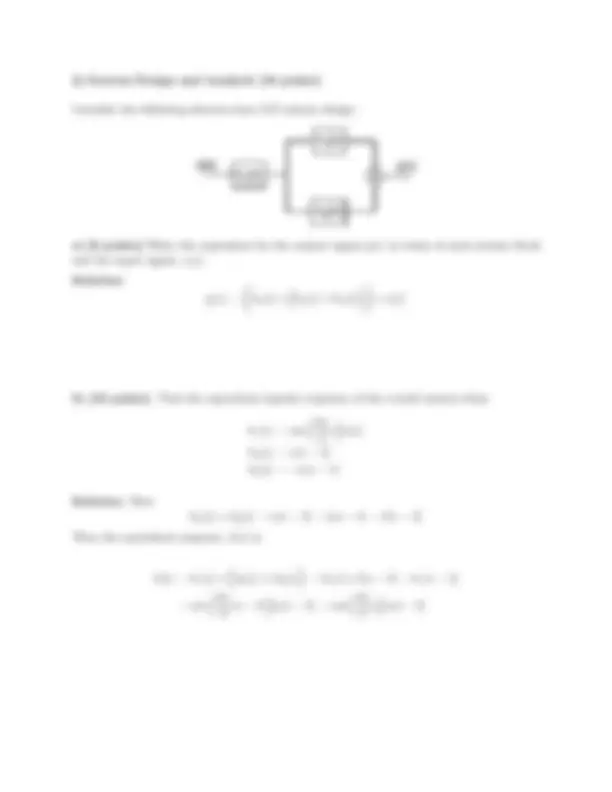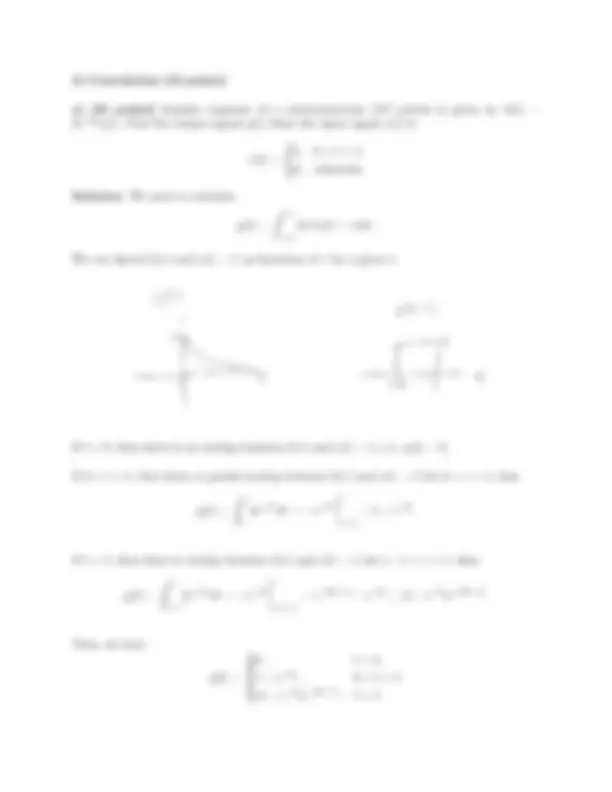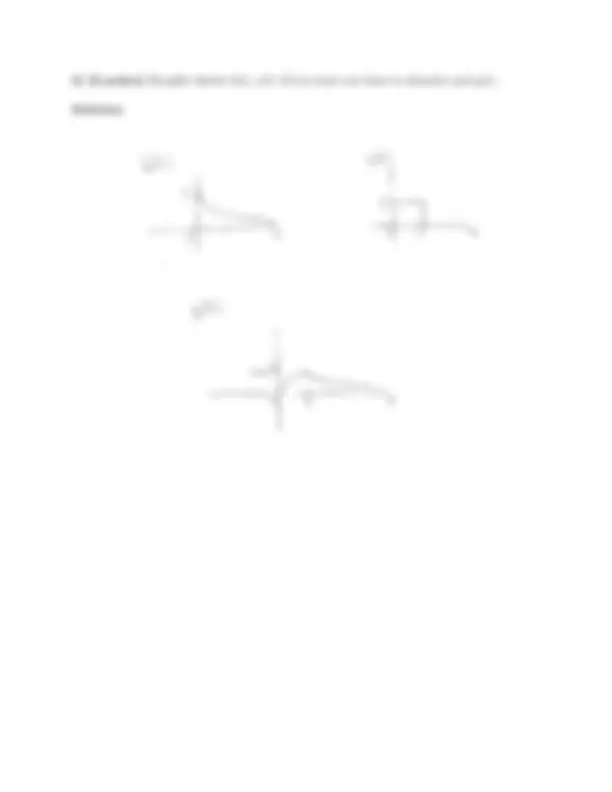





Study with the several resources on Docsity

Earn points by helping other students or get them with a premium plan


Prepare for your exams
Study with the several resources on Docsity

Earn points to download
Earn points by helping other students or get them with a premium plan
Community
Ask the community for help and clear up your study doubts
Discover the best universities in your country according to Docsity users
Free resources
Download our free guides on studying techniques, anxiety management strategies, and thesis advice from Docsity tutors
Solutions to EE3015 Midterm 1, Fall 2017
Typology: Exams
1 / 5

This page cannot be seen from the preview
Don't miss anything!




a) [5 points] Consider the system described by the input-output relationship
y[n] = cos
2 π
n
x[n].
Determine if this system is linear. Justify your answer.
Solution: Define H(x[n]) = cos
2 π
5
n
x[n].
We consider two signals, x 1 [n] and x 2 [n] , with corresponding outputs, y 1 [n] = cos
2 π
5
n
x 1 [n]
and y 2 [n] = cos
2 π
5
n
x 2 [n], respectively.
We input a linear combination of these two signals, as ax 1 [n] + bx 2 [n] for some constant a, b:
H(ax 1 [n] + bx 2 [n]) = cos
2 π
n
(ax 1 [n] + bx 2 [n])
= a cos
2 π
n
x 1 [n] + b cos
2 π
n
x 2 [n]
= ay 1 [n] + by 2 [n]
Thus the system is linear.
b) [6 points] Consider the system in (a) described by the input-output relationship
y[n] = cos
2 π
n
x[n].
Determine if this system is time invariant. Justify your answer.
Solution: Define H(x[n]) = cos
2 π
5
n
x[n].
For a fixed n 0 , we input a time-shifted signal as
H(x[n − n 0 ]) = cos
2 π
n
x[n − n 0 ]
We now check the time-shifted output
y[n − n 0 ] = cos
2 π
(n − n 0 )
x[n − n 0 ]
These two expressions are not equivalent for all choices of n 0 , thus the system is not time-
invariant.
c) [2 points] The impulse response of an LTI system is the output for which input signal?
Solution: To the unit impulse, or δ(t) in continuous-time or δ[n] in discrete-time.
d) [5 points] Determine whether the continuous-time LTI system with the impulse response
h(t) = e
2 t u(− 1 − t)
is stable. Justify your answer.
Solution: Check if h(t) is absolutely integrable:
∞
−∞
|h(t)|dt =
− 1
−∞
e
2 t dt
e
2 t
− 1
t=−∞
e
− 2 − 0
e
− 2
a) [10 points] Impulse response of a continuous-time LTI system is given by h(t) =
2 e
− 2 t u(t). Find the output signal y(t) when the input signal x(t) is
x(t) =
1 , 0 < t < 1
0 , otherwise
Solution: We need to calculate
y(t) =
∞
−∞
h(τ )x(t − τ )dτ.
We can sketch h(τ ) and x(t − τ ) as functions of τ for a given t.
If t < 0 , then there is no overlap between h(τ ) and x(t − τ ), i.e. y(t) = 0.
If 0 < t < 1 , then there is partial overlap between h(τ ) and x(t − τ ) for 0 < τ < t, thus
y(t) =
t
0
2 e
− 2 τ dτ = −e
− 2 τ
t
τ =
= 1 − e
− 2 t .
If t > 1 , then there is overlap between h(τ ) and x(t − τ ) for t − 1 < τ < t, thus
y(t) =
t
t− 1
2 e
− 2 τ dτ = −e
− 2 τ
t
τ =t− 1
= e
−2(t−1) − e
− 2 t = (1 − e
− 2 )e
−2(t−1) .
Thus, we have
y(t) =
0 , t < 0
1 − e
− 2 t , 0 < t < 1
(1 − e
− 2 )e
−2(t−1) , t > 1
b) [6 points] Roughly sketch h(t), x(t) (if you have not done so already) and y(t).
Solution: